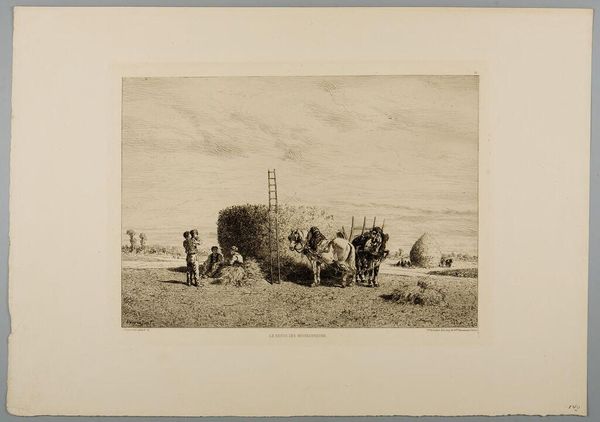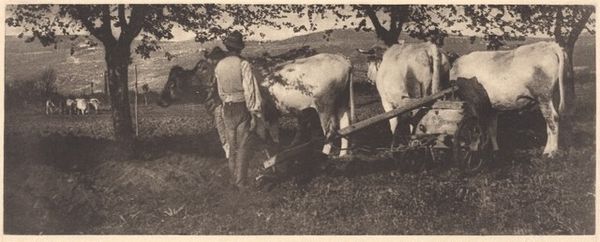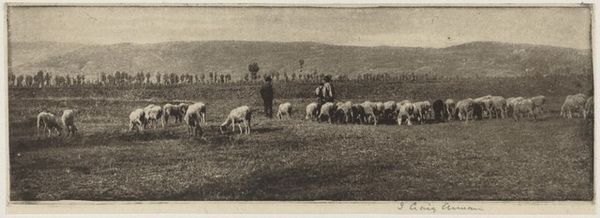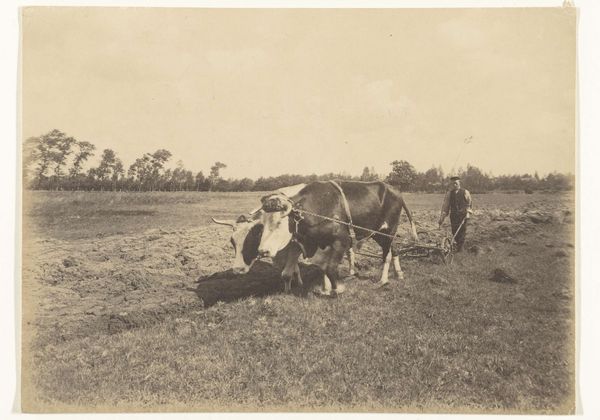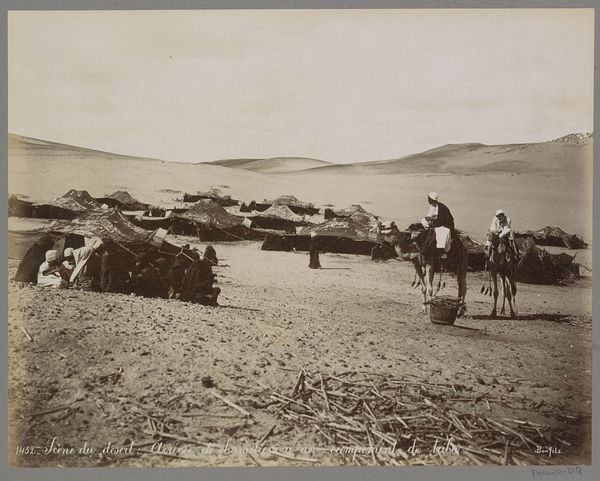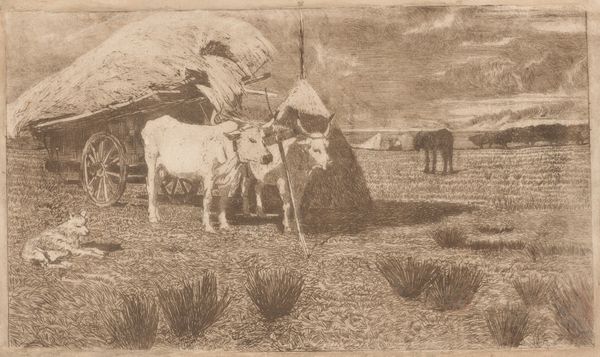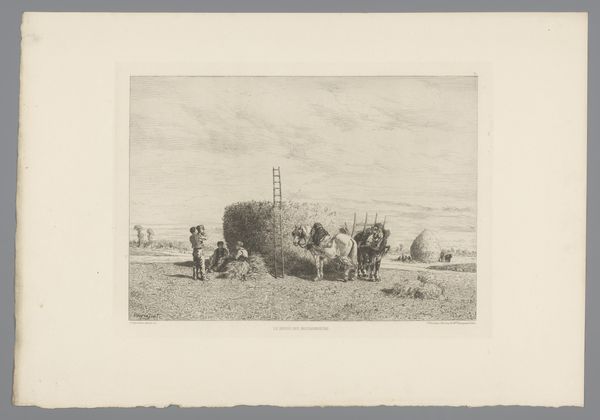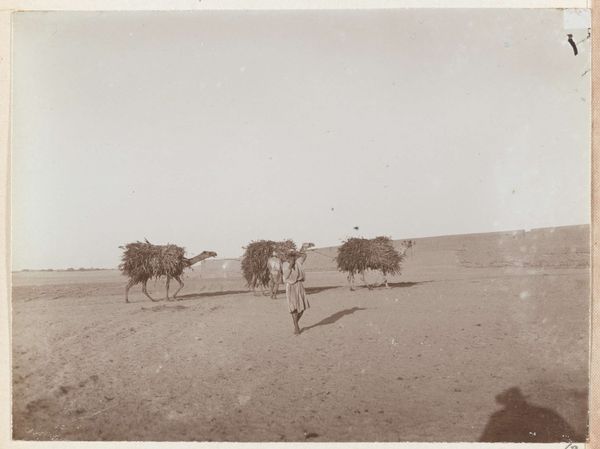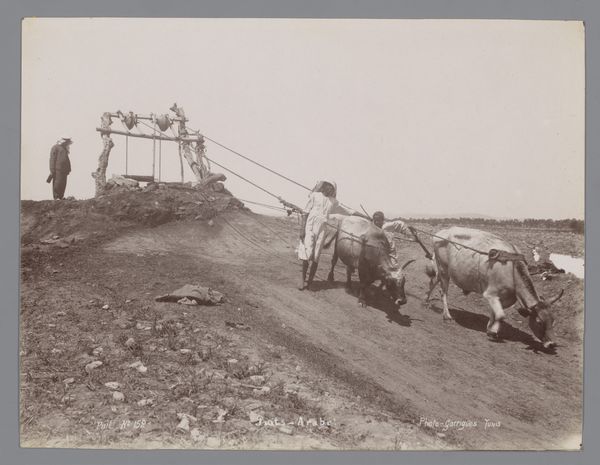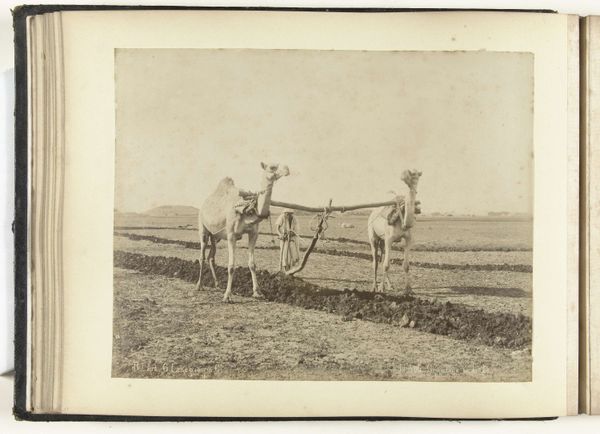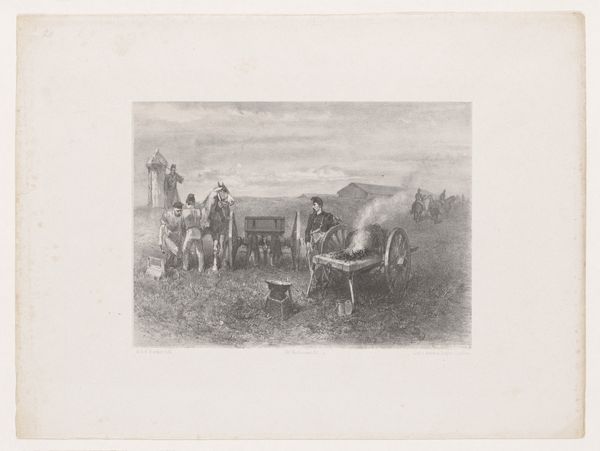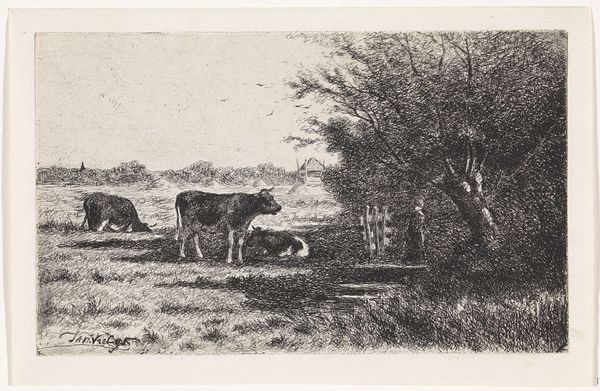
Dimensions: image: 4.7 x 14.6 cm (1 7/8 x 5 3/4 in.) sheet: 5.2 x 14.7 cm (2 1/16 x 5 13/16 in.) mount: 26.8 x 37 cm (10 9/16 x 14 9/16 in.)
Copyright: National Gallery of Art: CC0 1.0
Editor: We're looking at "Ploughing on the Campagnetta," a photograph by James Craig Annan from 1894. It’s a lovely pastoral scene; the oxen, the farmers working the land... it feels very grounded, very real. What stands out to you when you look at this, from a formal perspective? Curator: The power of this piece resides, first and foremost, in its masterful use of composition. Notice how the strong horizontal line of the freshly ploughed earth divides the pictorial space. How does that structure guide our eye? Editor: I suppose it pulls the eye across the image from left to right. The oxen, the farmers, they all lead you further into the space. Curator: Precisely! And note the tonal gradations achieved within a monochromatic palette. The foreground presents a rich, dark earth, contrasting elegantly with the hazy, almost ethereal quality of the background. Annan uses light to flatten the picture, making us aware of the image’s surface. Editor: The contrast is subtle, yet impactful. It almost feels like he's playing with texture as much as tone, particularly in the area of ploughed land and of the animals’ coats. Is there also something interesting in how he placed them in the scene? Curator: Absolutely. Consider how the figures and animals form a dynamic series of receding planes, creating depth while simultaneously asserting the photograph's inherent flatness. It’s a sophisticated game of spatial illusion. Are you sensing anything in the relation of light to dark within the landscape itself? Editor: Yes, the diffused light seems to soften the whole scene, muting sharp detail and emphasizing the tonal relationships. What seemed at first glance a realistic scene, almost becomes an exercise in pure visual arrangement. Thank you; I really notice things I overlooked before! Curator: Indeed! And hopefully we can appreciate not just what is represented, but the very language used to represent it.
Comments
No comments
Be the first to comment and join the conversation on the ultimate creative platform.
